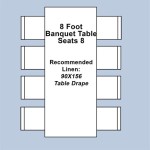The Enduring Appeal of the Lazy Susan Table Top
The lazy Susan table top, a rotating tray placed on a table to aid in distributing food, has been a staple in households and dining establishments for generations. Its simple yet effective design promotes accessibility and encourages communal dining. This article explores the history, functionality, materials, design considerations, and potential applications of the lazy Susan table top.
While the exact origin of the lazy Susan is shrouded in some mystery, its functionality speaks to a universal desire: to facilitate the sharing of resources, particularly food, in a convenient and socially engaging manner. The device minimizes reaching and stretching across the table, making it easier for everyone to access desired items. This promotes a more relaxed and enjoyable dining experience, particularly beneficial when multiple dishes are presented or when space is limited.
A Brief History of Rotary Serving Devices
Attributing the definitive invention of the lazy Susan to one individual is difficult. Various accounts and etymological theories surround its inception. One popular, albeit likely apocryphal, story attributes the invention to Thomas Jefferson, who purportedly created a rotating serving device to appease his daughter, also named Susan, who complained about having to reach far across the table during meals. Another theory suggests that "lazy Susan" was simply a generic term for a rotating serving table, popularized in the early 20th century.
Regardless of its precise origins, rotating serving platforms have existed in various forms throughout history. Earlier iterations might have resembled revolving tea tables or tiered serving stands, gradually evolving into the familiar single-plane turntable. The widespread adoption of the lazy Susan in American households appears to have occurred during the mid-20th century, coinciding with a rise in more informal dining styles and an embrace of labor-saving devices. Catalogs and advertisements from that era frequently featured lazy Susans made from various materials, solidifying their place in American domestic life.
Functionality and Benefits of a Lazy Susan
The primary function of a lazy Susan is to provide easy access to items placed upon it. Instead of requiring individuals to reach across the table, potentially disrupting others or causing spills, the lazy Susan allows for a simple rotation, bringing the desired item within easy reach. This is particularly beneficial during large gatherings where multiple dishes are being shared. Consider a family-style dinner with numerous side dishes; without a lazy Susan, diners would be constantly reaching, passing, and requesting items, leading to a less fluid and more cumbersome experience.
Beyond accessibility, lazy Susans contribute to efficient space utilization. By grouping multiple items on a single rotating platform, the device frees up valuable table space. This is especially advantageous in smaller dining rooms or when serving multiple courses. The rotating nature of the lazy Susan also encourages a more equal distribution of food. All diners have the opportunity to easily access and select their desired portions, promoting fairness and minimizing the potential for one person to monopolize a particular dish.
Furthermore, a lazy Susan can enhance the aesthetic appeal of a dining table. By providing a central focal point, it can add a touch of elegance or visual interest to the overall presentation. The choice of materials and design can complement the existing decor, creating a cohesive and harmonious dining atmosphere. A well-chosen lazy Susan can transform a simple meal into a more sophisticated and enjoyable experience.
Materials and Design Considerations
The materials used in the construction of a lazy Susan greatly influence its durability, aesthetics, and functionality. Common materials include wood, glass, metal, and various types of plastic. Each material offers distinct advantages and disadvantages.
Wooden lazy Susans offer a classic and timeless appeal. Hardwoods like maple, oak, or walnut are often preferred for their durability and rich grain patterns. Wood can be stained or painted to match existing furniture, allowing for seamless integration into the dining room decor. However, wood is susceptible to moisture damage and may require more maintenance than other materials.
Glass lazy Susans provide a sleek and modern aesthetic. Tempered glass is a durable and heat-resistant option, making it suitable for holding hot dishes. Glass is also easy to clean and resistant to stains. However, glass can be more fragile than other materials and may be prone to scratching. Clear glass allows the table surface to be visible, while frosted or colored glass can add a touch of visual interest.
Metal lazy Susans, often constructed from stainless steel or aluminum, offer a contemporary and industrial look. Metal is highly durable and resistant to corrosion, making it a suitable choice for both indoor and outdoor use. Metal can be powder-coated in various colors to customize its appearance. However, metal can be prone to fingerprints and may require more frequent cleaning.
Plastic lazy Susans, typically made from acrylic or polycarbonate, offer affordability and versatility. Plastic is lightweight, durable, and easy to clean. It can be molded into various shapes and colors, providing a wide range of design options. However, plastic may not be as aesthetically pleasing as other materials and may be prone to scratching or discoloration over time.
Beyond the material of the tray itself, the bearing mechanism is a critical component of a lazy Susan. High-quality bearings ensure smooth and silent rotation. Ball bearings are commonly used, providing reliable performance and long-lasting durability. The size and weight capacity of the bearings should be appropriate for the intended use of the lazy Susan. A poorly designed bearing mechanism can result in jerky or noisy rotation, detracting from the overall user experience.
The size of the lazy Susan should be proportionate to the size of the table. A lazy Susan that is too large can overwhelm the table, while one that is too small may not be as functional. A general guideline is to choose a lazy Susan that is approximately half the diameter of the table. The height of the lazy Susan should also be considered, ensuring that it does not interfere with the legroom of diners.
The edge design of the lazy Susan is another important consideration. A raised edge can help to prevent items from sliding off during rotation, while a flat edge provides a more streamlined look. The edge can be rounded or beveled for added safety and comfort.
Applications Beyond the Dining Table
While commonly associated with dining tables, the versatility of the lazy Susan extends to various other applications. Its rotating functionality makes it a useful organizing tool in different settings.
In the kitchen, a lazy Susan can be used to organize spices, condiments, or canned goods in cabinets or pantries. It allows for easy access to items that would otherwise be hidden at the back of the shelves. This is particularly useful in corner cabinets, where space is often underutilized.
In the bathroom, a lazy Susan can be used to organize toiletries, makeup, or skincare products on countertops or in cabinets. It provides a convenient way to access items without having to rummage through drawers or shelves.
In the office, a lazy Susan can be used to organize office supplies, such as pens, paper clips, or tape. It provides a compact and efficient way to keep these items within easy reach.
In craft rooms or workshops, a lazy Susan can be used to organize tools, paints, or other craft supplies. It allows for easy access to items while maximizing workspace.
Retail environments also benefit from lazy Susan applications. Rotating displays effectively showcase merchandise, drawing attention to featured items and encouraging customer engagement. These displays can highlight smaller products, promotional items, or even serve as interactive information kiosks.
The lazy Susan, therefore, represents a simple yet powerful solution for organizing and accessing items in various settings. Its adaptability and ease of use contribute to its enduring popularity.

Wooden Tabletop Lazy Susan Countertop Table Top Spice Organizer For Kitchen 3 Diffe Sizes Wood Designs Norway

Wooden Lazy Susan Table Centerpiece For Dinning Or Kitchen Counter Top Exotic Wood Turntable Island Gift Mom

Lazy Susan Wood End Grain Designs 3 Diffe Sizes For Kitchen Bar S

Tabletop Lazy Susan 21 Octagon Ana White

Magic Home 53 15 In Circular Sintered Stone Tabletop Kitchen Dining Table With Lazy Susan 4 Black Metal Legs 6 Seats Mh Dtt16b Dtl3b The Depot

Large Wood Lazy Susan For Dining Table From 18 Inch Up To 60 Diameter Yes We Ship And International

Magic Home 59 05 In Modern Round Rotary Lazy Susan Table Sintered Stone Tabletop Dining With 4 Black Metal Legs Seats 6 Mh A R150wb L1b The Depot

Lazy Susan Watercolor Flowers 3 Diffe Sizes For Kitchen Tabl Bar S

Diy Tabletop Lazy Susan Jaime Costiglio

How To Make An Easy Tabletop Lazy Susan Cribbs Style Diy
Related Posts








